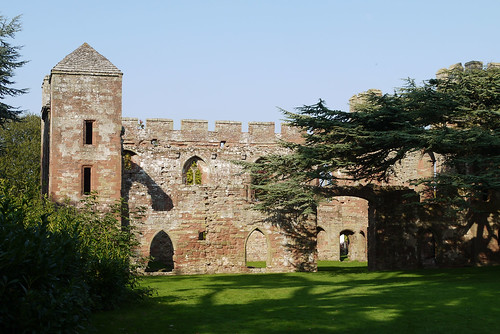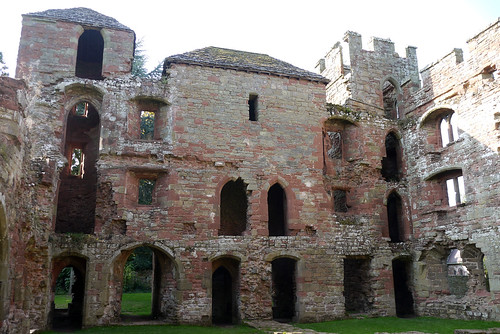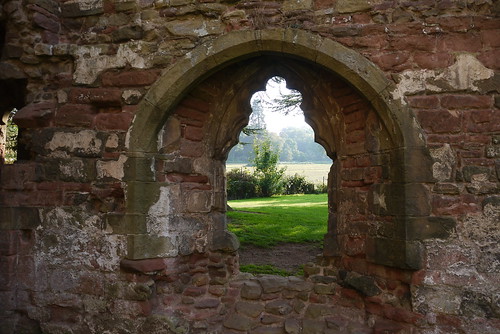A fortified manor house built in the late 13th century by Robert Burnell, Bishop of Bath and Wells, Chancellor of England from 1274-92, and for more than thirty years the friend, confidant and adviser of King Edward I.
When the king was staying at Acton Burnell in the autumn of 1283, he summoned one of the first Parliaments to be attended by the Commons as well as the Lords. It passed a Law for the protection of creditors which the king ratified here at the castle, and which is therefore known as the Statute of Acton Burnell.In the 18th century the ruins of the castle became an ornamental feature in the grounds of Acton Burnell Hall. *
In 1284, Robert Burnell obtained a licence from the king to fortify his residence. Work was probably still in progress when Robert died in 1292. The large first-floor windows of the castle suggest, however, that it never had a serious defensive purpose and was instead perhaps designed to impress.
The Burnell family of Acton Burnell held land in Shropshire from the 1180s, though it was a century later that Robert Burnell came to prominence. Entering royal service as a clerk to Henry III’s son Prince Edward, he rose to become Chancellor of England and Bishop of Bath and Wells when the prince acceded to the throne as Edward I in 1272.
The king’s military campaigns in Wales frequently brought him to Shropshire, and he stayed at Acton. His visit in 1283 assumed national significance when he held a parliament, according to tradition, in the tithe barn here. This was supposedly the first at which commoners were represented.
In 1284 Robert Burnell obtained a licence from the king to fortify his residence. Work was probably still in progress when Robert died in 1292. The large first-floor windows of the castle suggest, however, that it never had a serious defensive purpose and that it was instead perhaps designed to impress. Evidence of Robert’s building zeal may also be seen in the adjacent church, a fine example of Early English architecture. Burnell’s wealth and his position as bishop enabled him to employ the best masons.
By 1420, however, the castle was abandoned. It was allowed to decay while a new house, Acton Burnell Hall (not in the care of English Heritage), was built next to it in the 18th century. Thus saved from later alterations, the castle remains an impressive example of a medieval fortified manor house.
*From a signboard at the entrance to the castle ruin.












I love these ruins and always try to be ‘in that time’… I have to say this fortified manor looks very impressive and must have been big for its time. Love the brickwork.
I like the colour of these bricks
Tithe barns, ruined castles – it takes one back.
In some ways things haven’t changed that much. Or maybe we have reach a certain point in a cycle…
Not hard of this before. Looks a fascinating place to visit.
There are some interesting photo opportunities. Red brick, green trees and a variable sky to play with